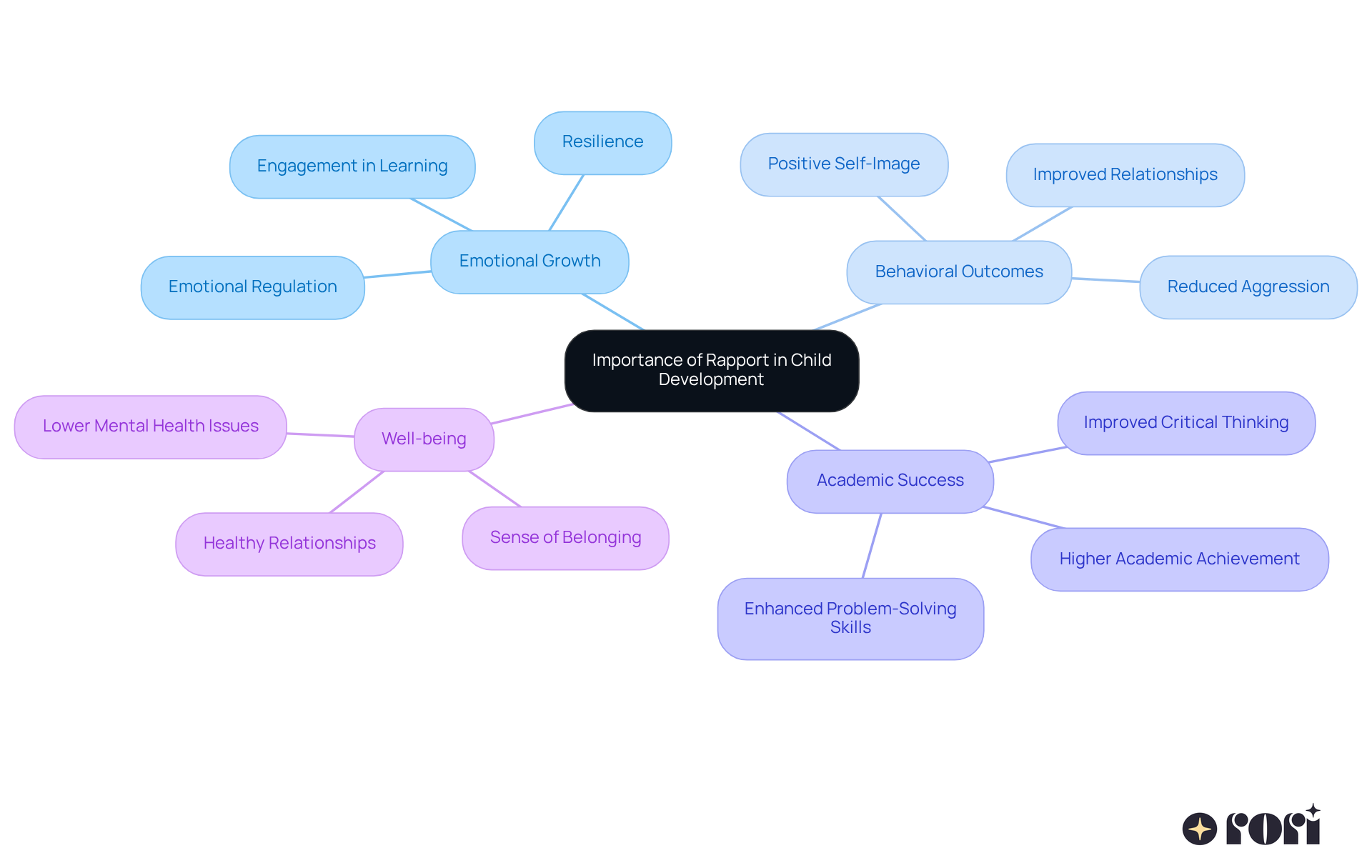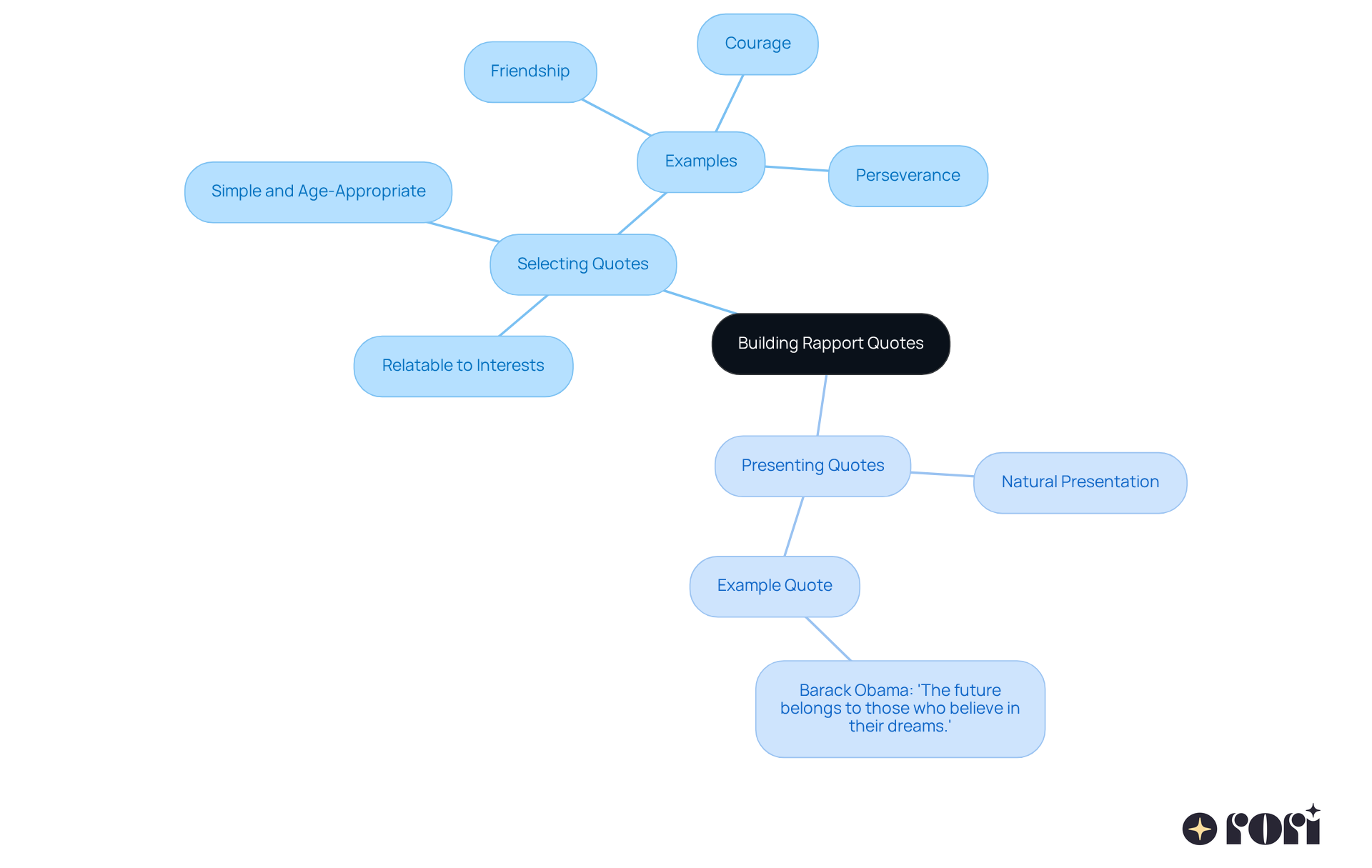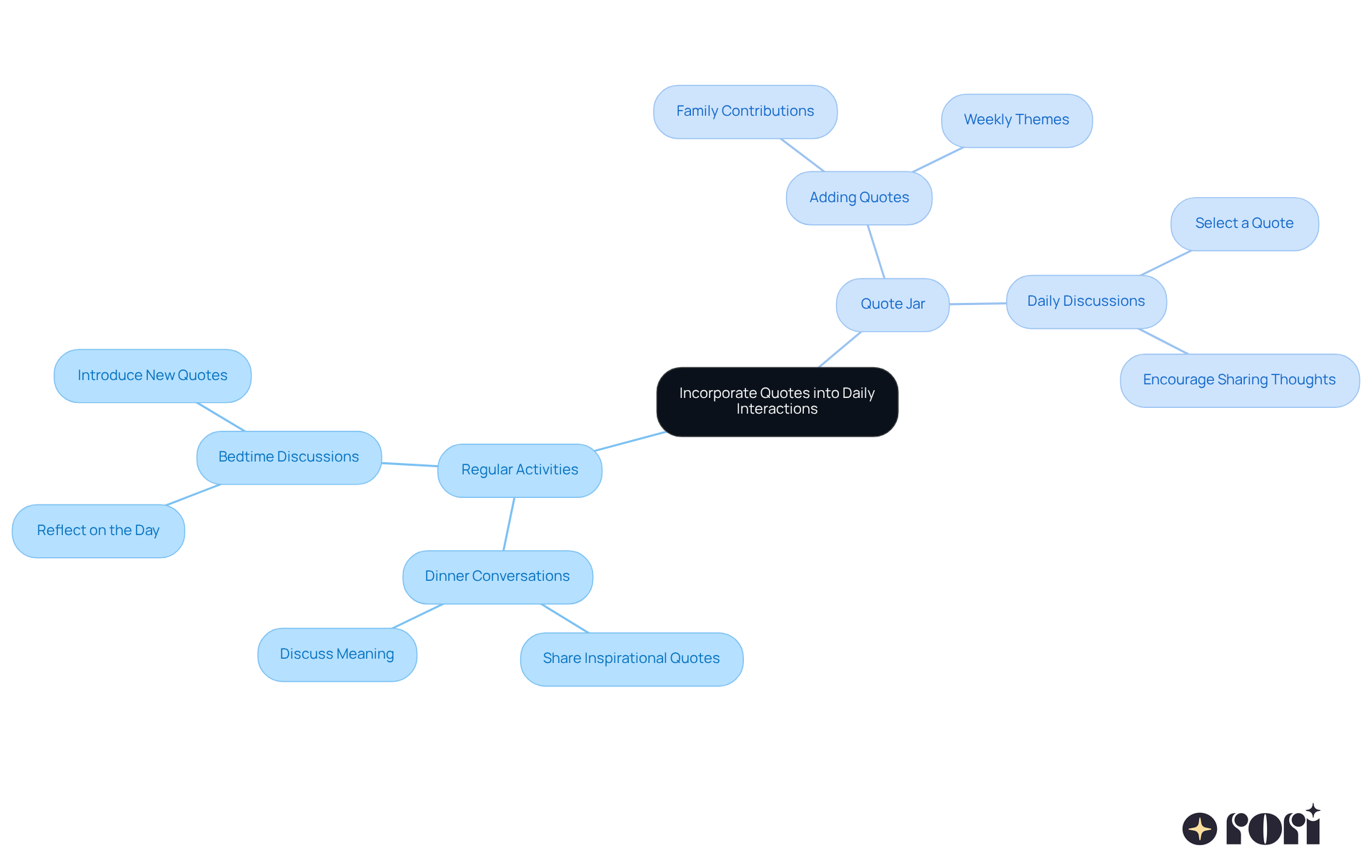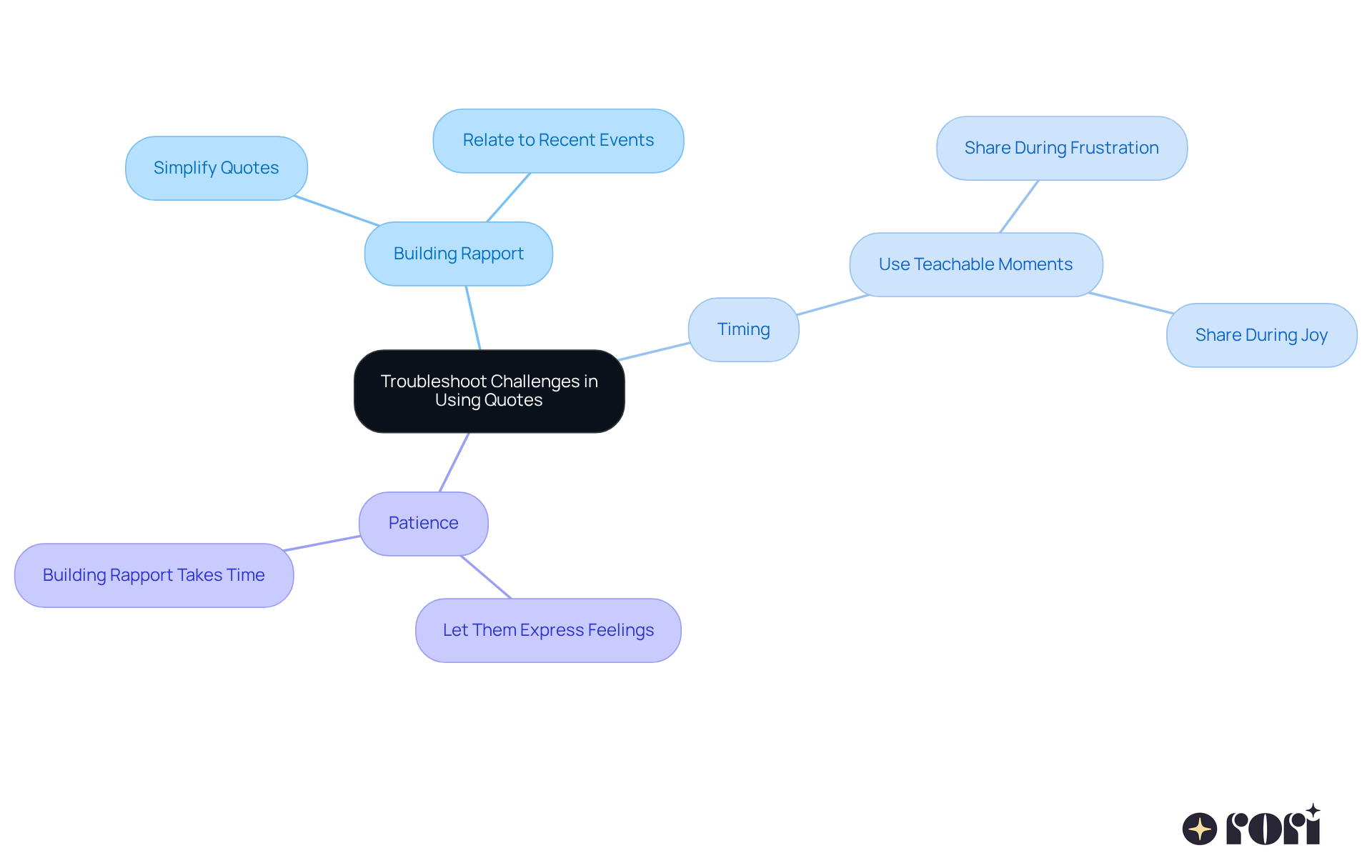This article shares four simple steps to help you build rapport with children, enhancing their emotional and social development.
Let’s explore this together!
Building a strong connection with children is fundamental to their emotional and social development. Yet, many caregivers often overlook the profound impact this relationship can have. By effectively using building rapport quotes, caregivers can create an environment that encourages children to express themselves and engage in meaningful conversations.
But how can one navigate the challenges of selecting and integrating these quotes into everyday interactions? It’s all about making those words resonate with a child’s unique experiences. Let’s explore this together!
Imagine a moment when a simple quote sparked a conversation with your child. Those small, relatable phrases can open up a world of dialogue. As caregivers, we have the opportunity to foster deeper connections, but it requires a bit of thoughtfulness and creativity.
Remember, every child is different, and what works for one might not work for another. This is where the challenge lies. However, by sharing quotes that align with their feelings, we can help children feel understood and valued.
So, as we navigate this journey, let’s embrace the power of words and their ability to connect us. We’re here to help you every step of the way!
Building a connection with young people is so important for their emotional and social growth. When they feel understood and secure, they’re much more likely to engage in learning and express themselves openly. This connection creates a supportive environment where kids can thrive, helping caregivers guide them through various challenges.
Research shows that strong relationships between caregivers and children lead to better behavioral outcomes. Kids who feel securely attached tend to have improved emotional regulation and resilience. For instance, children with stable attachments are more likely to develop critical thinking skills and achieve higher academic success over time.
By prioritizing this rapport, caregivers cultivate a sense of belonging and security, which is crucial for a young person’s overall well-being, as illustrated by many building rapport quotes. As we know, 'Children with secure attachments are more likely to develop a positive self-image and are less prone to mental health issues like depression and anxiety.' This really underscores how vital consistent and responsive caregiving is in shaping a young person’s future success.
Let’s explore this together!

To effectively utilize citations in building rapport, start by selecting sayings that resonate with your child's interests and experiences. Look for building rapport quotes that are simple and relatable, making them suitable for various ages. For example, sayings about friendship, courage, or perseverance can spark meaningful conversations. As Barack Obama said, 'The future belongs to those who believe in their dreams.' This can inspire children to share their aspirations.
Once you have a few quotes in mind, think about how to present them naturally. You might say, 'I found this saying that made me think of you

Integrating citations into our everyday conversations can be both enjoyable and influential! Start by weaving in sayings during regular activities, like mealtime or bedtime. For example, you might say, 'As we eat dinner, remember what Helen Keller said: "Alone we can do so little; together we can do so much." Let’s chat about how we can help each other today!'
Additionally, consider creating a quote jar where you and your little ones can add your favorite quotes. Each day, pick one to discuss, encouraging your child to share their thoughts and feelings about it. This practice not only strengthens the message but also makes your young one feel appreciated and listened to. Let’s explore this together!

Utilizing building rapport quotes can really help in building relationships with young ones, but it’s not always easy—especially when a child seems disinterested or confused. If a child isn’t connecting with a saying, consider simplifying it or tying it to something recent. For example, if you’re discussing a saying about teamwork, you might say, 'Remember when we worked together to build that fort?' That’s exactly what this saying is about! This way, it feels more relatable and engaging.
Timing is also super important when sharing citations. Look for those teachable moments, like when your child is feeling frustrated or joyful, to share relevant sayings. For instance, if your child is feeling down about a setback, a saying about resilience can really offer some encouragement and perspective.
If your child seems resistant to sayings, patience is key. Let them express their feelings and thoughts about the quote. Building rapport takes time, and persistence is essential. Remember, 58% of middle school students use smartphones, which can distract them from traditional learning tools. So, weaving in citations during conversations about their interests can help bridge that gap and strengthen your bond. As William James wisely said, 'Act as if what you do makes a difference. It does.' This really highlights the importance of using building rapport quotes.

Building rapport with children is such a vital part of nurturing their emotional and social growth. When caregivers forge a strong connection, they create a loving environment that supports learning, self-expression, and resilience. This article highlights how effective communication and relatable quotes can significantly strengthen these bonds.
So, how can we weave building rapport quotes into our daily interactions? It’s all about choosing age-appropriate sayings, incorporating them into our routines, and being mindful of the right moments to share them. By using quotes that resonate with what children experience, caregivers can ignite meaningful conversations and inspire personal reflection. It’s also important to tackle common hurdles, like disinterest or confusion, reminding us of the patience and flexibility needed to nurture these precious relationships.
Ultimately, embarking on the journey of building rapport with children is a fulfilling adventure that lays the groundwork for their future success. By actively engaging in this process, caregivers not only uplift their child's emotional well-being but also contribute to their overall development. Embracing the power of words and fostering open communication can cultivate lasting connections that empower children to thrive. Let’s explore this together!
Why is building rapport important in child development?
Building rapport is crucial for children's emotional and social growth. When children feel understood and secure, they are more likely to engage in learning and express themselves openly.
How do strong relationships between caregivers and children affect behavioral outcomes?
Research indicates that strong relationships lead to better behavioral outcomes. Children who feel securely attached tend to have improved emotional regulation and resilience.
What are the benefits of stable attachments in children?
Children with stable attachments are more likely to develop critical thinking skills and achieve higher academic success over time.
How does prioritizing rapport impact a child's sense of belonging?
Prioritizing rapport helps caregivers cultivate a sense of belonging and security, which is essential for a young person's overall well-being.
What is the relationship between secure attachments and mental health in children?
Children with secure attachments are more likely to develop a positive self-image and are less prone to mental health issues like depression and anxiety.
What role does consistent and responsive caregiving play in a child's future success?
Consistent and responsive caregiving is vital in shaping a young person's future success by fostering secure attachments that contribute to emotional and social development.